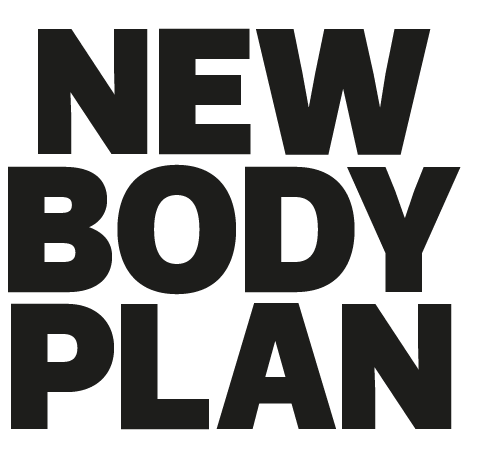Build a strong and defined back with the T bar row
The T bar row is one of the best compound exercises for building upper back size and strength. But this high reward move can also be high risk if you don’t perform it with perfect form. Here’s how to get it right to start building the lean, strong and defined back you want, says New Body Plan editor Joe Warner
It’s easy to tense your arms or puff out your chest to make these mirror muscles appear bigger or more defined than they actually are. But you can’t fake a big and broad upper back.
And as men get older it’s common for excess body fat to be stored on the back, leading to the badly-named love handles which no man likes having.
To get the lean and defined back you want you need to dedicate as much training time to these muscles you can’t see in the mirror as you do to the ones you can. And there’s few better places to start than with the T bar row. Here’s how to do this back-building move to strip away stubborn body fat and build lean and defined muscle in it’s place!
Find your perfect fat-loss plan!
Take the New Body quiz!
What is a T bar row?
The T-bar row is a challenging weight-lifting exercise. It often features in strength and muscle-building training programmes to build muscular strength, size and endurance in the back, biceps and forearms.
What equipment do I need to do the T bar row?
The exercise is most often performed using a dedicated T-bar machine. The exact specifications of the machine can differ, but many models have a padded chest support on which you rest your chest and then perform the move.
Within the machine’s frame is a barbell: one end is anchored to the floor, and the other end has a handle which you grip. You add weight plates at the handle end. Some models don’t have a chest support pad so you just stand and bend over the bar with your feet either side of it.
What muscles does the T bar row work?
The T bar row exercise primarily works the muscles in the upper back and arms, including the latissimus dorsi (lats), trapezius (traps), and biceps.
The lats are the largest muscles in the upper back, and they are responsible for extending, rotating, and adducting the shoulder.
The traps are located in the upper back and shoulders, and they are responsible for moving the shoulder blades.
The biceps are located in the front of the upper arm, and they are responsible for flexing the elbow and supinating the wrist.
The T bar row also works the muscles in the lower back, abdominals, and legs, including the erector spinae, obliques, and glutes. These muscles help to stabilise the body during the exercise and provide support for the upper body muscles as they work to lift the weight.
Why should I do the T bar row?
One of the main benefits of the T bar row is that it is a compound exercise. This means it works multiple muscle groups at the same time. This can make the T bar row an efficient way to build strength and muscle mass, as well as improve overall functional fitness.
Additionally, the T-bar row is a weight-bearing exercise, which means that it can help to improve bone density and reduce the risk of osteoporosis.
How do I do the T bar row?
– Place the desired weight plates on the end of the bar.
– Adjust the machine, if applicable, so that your chest rests on the padded bench and you can grip the handles with both hands with arms fully extended.
– Position yourself on the machine with your chest against the padded bench, hands holding the handles with a wide, overhand grip, and feet firmly planted on the floor or footplate.
– Keeping your chin up and chest against the pad, lead with your elbows to pull the bar up towards your chest.
– At the top position hold and squeeze your back and biceps muscles for at least one second.
– Slowly reverse the movement to return the bar back down to the start position.
– Lower the bar down under complete control: don’t let gravity take over or just drop it back down.
– That’s one rep.
For muscle strength gains do three to four sets of three to seven reps, resting up to three minutes between sets.
For muscle size gains do three to five sets of eight to 12 reps, resting up to two minutes between sets.
For muscle size and endurance gains do three to four sets of 12 to 20 reps, resting up to two minutes between sets.
My gym doesn’t have a T bar row. What T bar row alternative exercises can I do?
There are a number of exercises that can act as an alternative move to the T bar row because they work the target muscles in a similar way.
Bent-over row
The bent-over row involves holding a barbell in both hands or a dumbbell in each hand with a pronated (palms facing forward) grip then hinging forward at the hips to lower your torso until it is nearly parallel to the ground. From here you row the weight up towards your chest, squeezing your shoulder blades together as you go. This is a good alternative if you only have dumbbells or a barbell with weight plates available.
Seated cable row
The seated cable row works your upper back, biceps and forearm muscles in a similar way to the T bar row, but you use a cable machine to do the exercise. The main advantage of a cable machine is it places tension on the target muscles through every stage of the rep. And being seated takes a lot of pressure off your lower back. This makes the seated cable row a good option if you have any lower back problems.
Inverted rows
The inverted row is a bodyweight exercise, which means you lift and lower your own bodyweight as resistance to work the muscles, rather than external resistance, such as barbells, dumbbells or machines. You can do inverted rows with TRX straps, on a Smith machine, or with a barbell on the safety bars of a squat rack. Grip the handles or barbell with a wide overhand grip and your heels on the floor with legs fully straight, then pull yourself up until your chest is level with your hands, then lower yourself back down.
Chest-supported rows
Chest-supported rows are also very similar to T bar rows, except all your need is an incline bench and some weights: dumbbells, a barbell, kettlebells or an EZ bar will do. Lie with your chest against the padded bench, holding the weights with straight arms, then row them up and back down. This is a good alternative for busy gyms or home gym set-ups, or if you’ve lower back issues.
Pull-ups
It may be a bodyweight move, but pull-ups are one of the hardest exercises there is. The exercise works the muscles of your back, biceps and forearms slightly differently to T bar row, but it’s a great alternative if you don’t have any equipment or want to get better at bodyweight exercises. If you can’t yet do the full bodyweight move you can build up your upper-back strength by doing machine assisted pull ups.
Is a T bar row better than a barbell bent-over row?
It’s not the case that one exercise is inherently better than another. They each have unique advantages and disadvantages that must be considered when weighing up which moves best suit you individual experience, injury history and goals.
The main difference between a T bar row and a barbell bent-over row, aside from the equipment used, is your body position.
In some T bar row machines your chest is supported on a padded bench, which stabilises your body and takes pressure off your lower back. In a barbell bent-over row you must support yourself to keep your body in position. This requires the lower back muscles to work hard to stabilise your torso. If your lower back muscles fatigue first you may not get the chance to fully work your upper back, thus limiting the effectiveness of the exercise.
Even with a T bar row machines without a chest-support bench, the handle position and lower start position may place less strain on the lower back that the barbell bent-over row. This makes the T bar row a safer and more effective exercise selection than the barbell bent-over row or Smith machine bent-over row if you have or have had lower back issues.
How do to the cable face pull for strong and stable shoulders
How is a T bar row different to a landmine row?
A T-bar row and a landmine row are very similar exercises that strengthen the muscles in the upper back and arms. Both moves are performed using a weight plate and a handle or grip, and they both involve pulling the weight up toward your chest to engage the upper back and biceps. However, there are some key differences between the two exercises that make provide different advantages.
One of the main differences between the T-bar row and the landmine row is the equipment used. A T bar row is performed using a T bar machine, in which the barbell can only travel straight up and down.
A landmine row is performed using a landmine attachment, in which a barbell anchored to the ground at one end but can move up and down and left and right. The greater range of motion when using a landmine requires your stabilising muscles to be engaged to support your body position during each phase of every rep. This makes it a more challenging move, so you may find you can’t lift as heavy when doing the landmine row compared with a T bar row.
Find your perfect fat-loss plan!
Take the New Body quiz!
How to use the Smith machine bench press to build a defined chest

